Here’s my performance of pages 8 and 9 of the ‘Ukulele transcription of the Pastorale symphony:
Nancy, one of my readers, asked last week what the source was for the music I used to make the Pastorale transcription. I actually considered several different sources before I finally decided what I would use, and it’s amazing to me that I was able to do that with a minimum of fuss…
Back in the day (before 2006 or so), times were different. If you wanted to look at several different versions of a piece, you would have to go to a library with an extensive collection of scores. Now, it’s possible to look at several different editions of almost any piece of public-domain music in the privacy of your own home. In your pajamas with a cup of coffee if you want. All you need is a computer or other device that can access the web and a reasonable internet connection!
If you don’t know about IMSLP, you’re about to be introduced to one of the most amazing websites in the world. IMSLP stands for “International Music Score Library Project” and it’s awesome! According to the Wikipedia article about IMSLP, “Since its launch on February 16, 2006, over 370,000 scores and 42,000 recordings for over 110,000 works by over 14,000 composers have been uploaded.” Thats a lot of music! Included are the complete works of Beethoven, Bach, Chopin and many other composers.
For the Beethoven Pastorale symphony, a simple Google search directed me to this page, which lists all of the different versions of the sheet music and the various recordings of the work available on IMSLP. If you scroll down the page to discover what sheet music is available, you can see a lot of options: 22 different scores, 26 sets of parts and 29 arrangements and transcriptions!
That much choice can be overwhelming. For the “Pastoralele” ‘Ukulele transcription process, I narrowed it down to four choices. You can see what each choice looks like below (all these samples are from IMSLP).
The first was Beethoven’s original handwritten manuscript from 1808. Here’s what the section I feature this week looks like in Beethoven’s own hand:
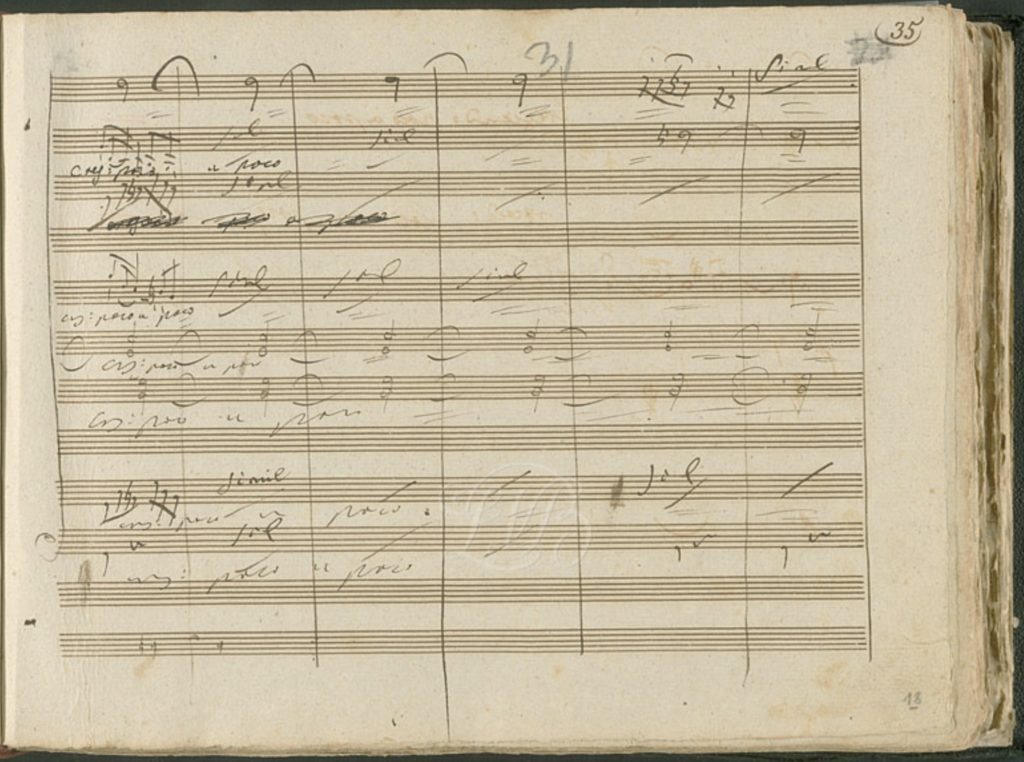
As you can see, Beethoven’s manuscript is very difficult to read! I really pity the copyists who had to prepare parts from this for the first performance. I decided to go with something a little more clear, so the second score I considered was the first edition, published in 1826:
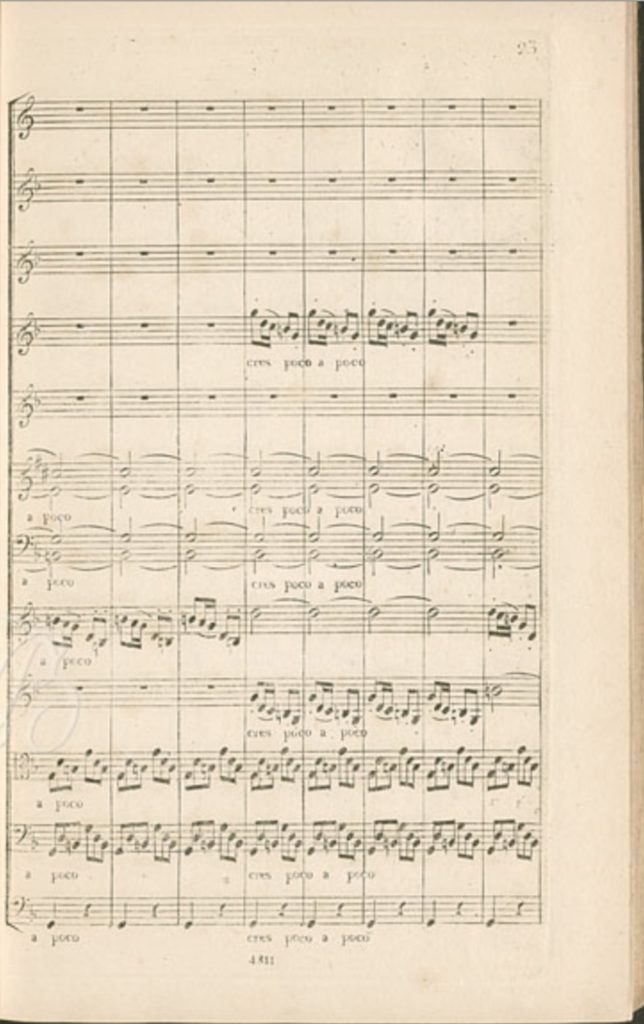
This is much clearer, and I almost decided to use this edition, but for reasons I’ll explain below, I ultimately went with something different.
The third option considered was the solo piano reduction by Franz Liszt:
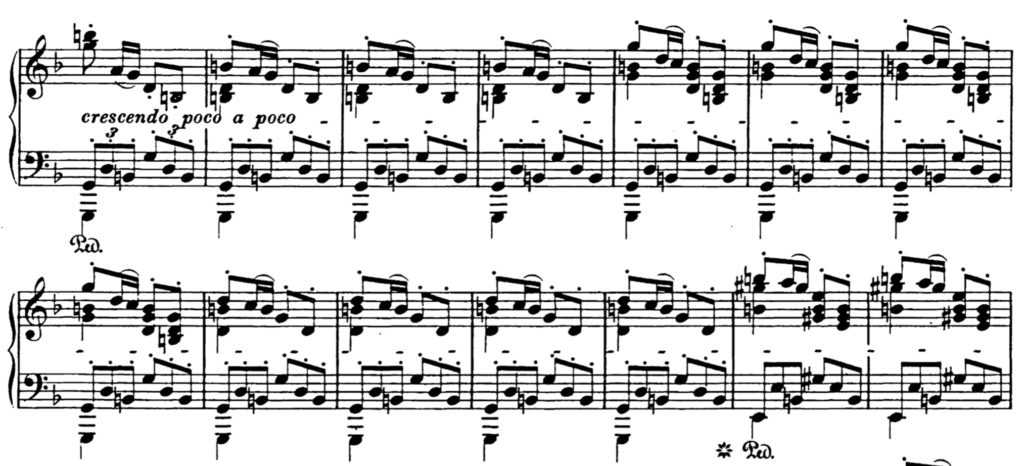
Why a piano reduction? Well, it’s easier to read than an orchestral score, since everything is on two staves instead of twelve or more! Also, a piano score doesn’t include weird clefs (the viola’s alto clef, for example) or transposing wind instruments (horn in F, clarinet in B-flat, etc.). In addition, the treble staff of a piano fits right in the range of the ‘Ukulele, so someone who is good at reading standard notation could, to a certain extent, almost sight-read the upper piano staff.
I seriously considered working from a piano reduction, but ultimately decided to use the score in an edition edited by Henry Litollf, first published in 1880:
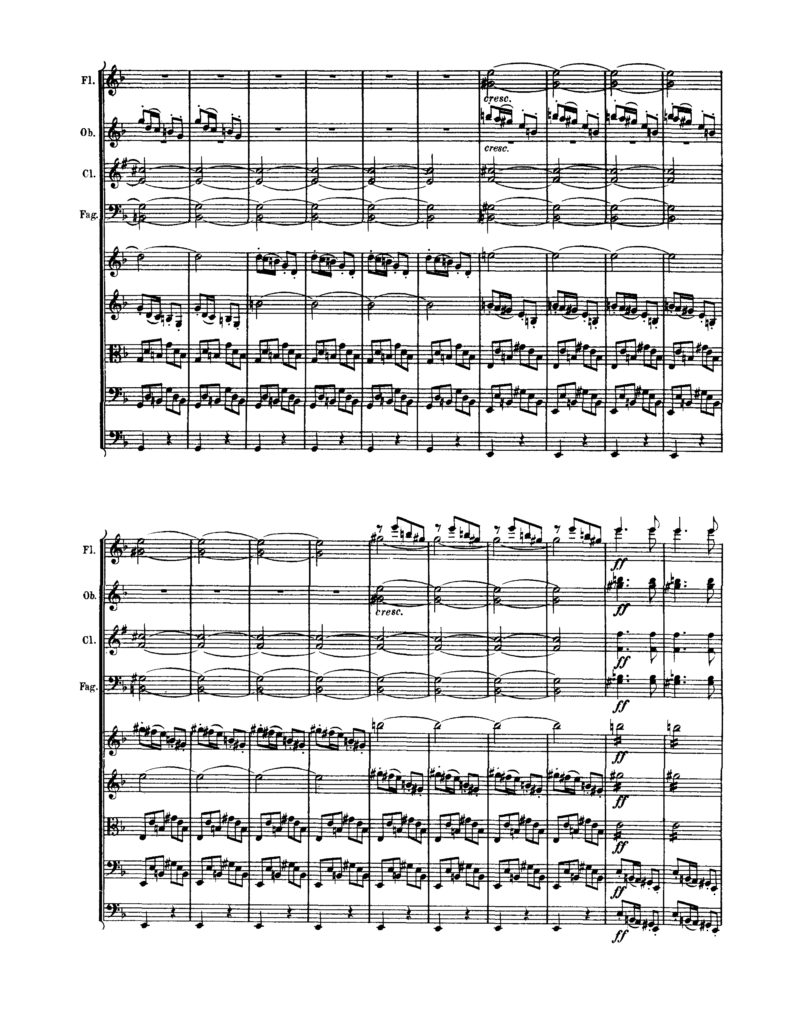
Why this edition? First reason-nostalgia. Back in the day, I owned this edition in a hard copy, printed by Dover Publications. It was a required purchase for a seminar on the Beethoven symphonies I took as an Undergraduate. In fact, I owned the Dover reprints of all the Beethoven symphonies, and I felt a certain pride in owning the scores. Occasionally, I would look at the scores or try to follow along while listening to a recording, but honestly, they never got much use, so they were eventually given to Goodwill when I decided to “purge” a lot of the books I had sitting around the house. I re-purchased a used copy of the Dover volume featuring Symphonies 5, 6 and 7 when I started this project. The hard copy felt more natural and less “fiddly” to work with than a pdf on the screen of a computer or tablet. Plus, it feels good to have some Beethoven back in the house!
Just for comparison, here’s what the ‘Ukulele tablature of page 9 looks like in my own hand, and after being transferred into Sibelius notation software:
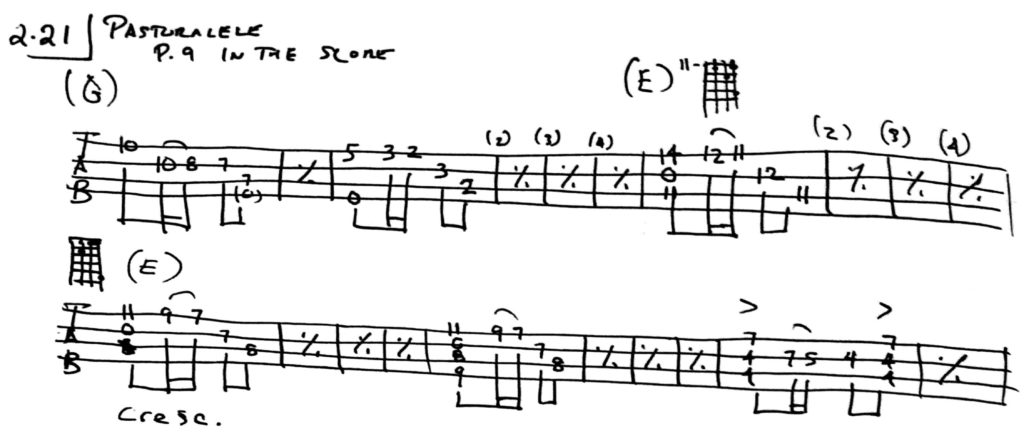
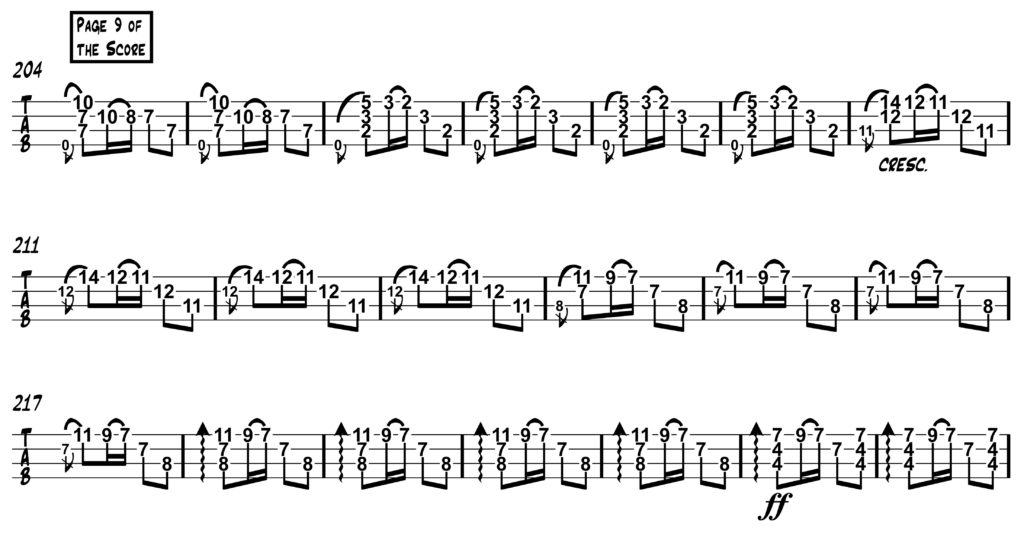
Maybe someday my Pastorale ‘Ukulele transcription will end up in IMSLP! For now, join my email list if you would like a copy of what I’ve done so far.
Thanks for joining me on this journey! I love to hear from you, so get in touch if you have any questions, comments, or just to say “hi”!
All the best to you!
-James